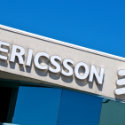
Ericsson has nearly doubled its forecast for the number of cellular Internet of Things (IoT) connections after witnessing faster-than-expected growth in the last few months.
The Swedish equipment vendor reckons there will be 3.5 billion IoT connections that use cellular technology by 2023, after forecasting 1.8 billion over that timeframe as recently as November.
"Cellular IoT is growing fast and this has led us to significantly increase our forecast," said Fredrik Jejdling, Ericsson's executive vice president and head of business area networks, in Ericsson's latest mobility report. "By 2023, we now estimate around 3.5 billion cellular IoT connections. This growth is set to impact industries and businesses across many different markets."
Based on figures from the Global Mobile Suppliers Association (GSA), Ericsson AB (Nasdaq: ERIC) estimates there were about 700 million cellular IoT connections last year.
IoT business has traditionally been served using mainstream 2G, 3G and 4G technologies, but these have remained too costly for many customers.
The recent emergence of NB-IoT and LTE-M, which have been designed to provide much greater power efficiency, appears to have given a massive boost to the cellular IoT business.
While those technologies have had their teething troubles, including reports of interoperability problems between Ericsson and Huawei, the current take-up suggests the worst is now behind them. (See Ericsson, Huawei incompatibility threatens NB-IoT – sources and Telco IoT in 2018: Firework or Flop?.)
If prices still remain too high for some organizations, Ericsson is confident that large-scale deployments will lead to a reduction in chipset costs and make services affordable for new types of customer.
Ericsson reckons there are currently about 60 cellular IoT networks worldwide that use either LTE-M or NB-IoT technology. Much of the interest in NB-IoT has come from China, where the country's national operators are using the technology to provide connectivity for utility meters and in smart city and smart agriculture deployments.
Indeed, Ericsson thinks North East Asia will account for as many as 2.2 billion cellular IoT connections by 2023.
Want to know more about the Internet of Things? Check out our dedicated IoT content channel here on Light Reading.
According to the latest mobility report, which Ericsson published earlier today, only about 100 million "wide-area" IoT connections in 2017 used non-cellular technologies, the most prominent of which are Sigfox and LoRa. (See French Toast? Sigfox on Skid Row.)
Developed outside the cellular industry, both rely on unlicensed spectrum to provide connectivity and have previously claimed a big cost advantage over cellular.
It was the IoT challenge from Sigfox and LoRa that compelled the cellular industry to NB-IoT, according to industry sources. The rush to bring this technology to market may be responsible for some of the equipment interoperability problems that are now being addressed.
Even though Ericsson expects cellular to account for the bulk of wide-area IoT connections by 2023, it is also forecasting an increase in the number served by non-cellular technologies.
Around 600 million connections will use non-cellular technologies by 2023, according to Ericsson.
Ericsson's forecasts look restrained next to Huawei's outlook. Earlier this year, the Chinese vendor predicted 35 billion "telco" IoT connections by 2025, up from an estimate of 600 million connections last year.
The big question for the industry is whether the connections growth that Ericsson and Huawei Technologies Co. Ltd. anticipate will translate into sales growth for telcos.
Huawei expects telco IoT revenues to increase from $8 billion last year to a staggering $400 billion in 2025, but some analysts remain unconvinced IoT will fuel revenue growth for operators.
Bengt Nordström, the CEO of the Northstream consulting business, thinks operators may have to provide more than just connectivity if they are really to profit from IoT business.
"More and more we've been hearing the connectivity part of IoT will be very small and there is an increasing realization of that," he told Light Reading during a meeting at Mobile World Congress earlier this year. "If you have big ambitions with IoT you need to engage in software, security, management of devices, reselling of solutions and systems integration."
— Iain Morris, International Editor, Light Reading
About the Author(s)
You May Also Like




_International_Software_Products.jpeg?width=300&auto=webp&quality=80&disable=upscale)







